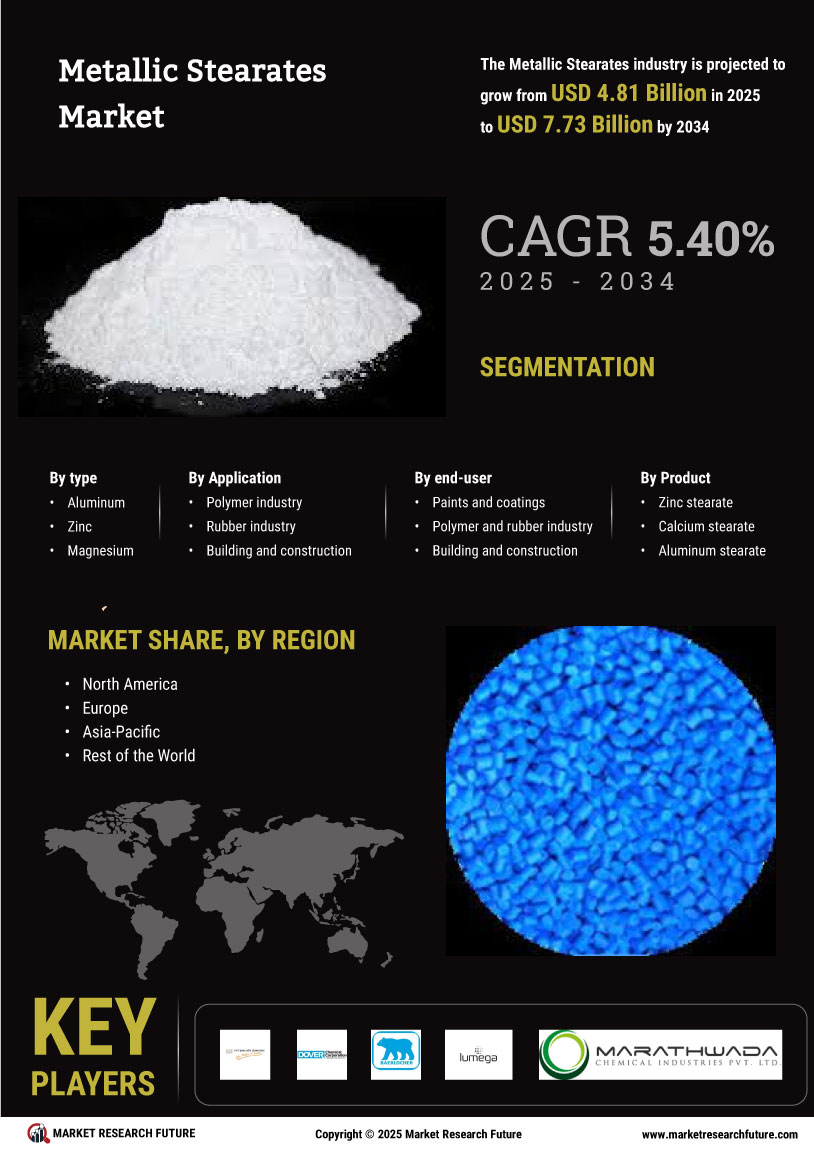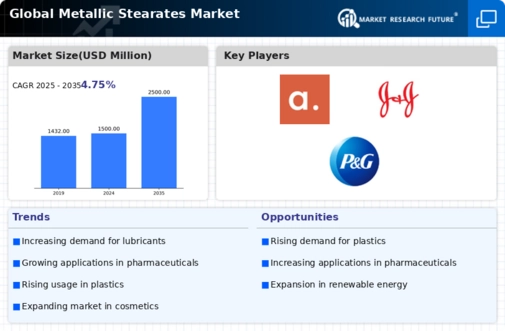Market Growth Projections
The Global Metallic Stearates Market Industry is projected to experience substantial growth over the next decade. With a market size expected to reach 1500 USD Million in 2024 and potentially expanding to 2500 USD Million by 2035, the industry is poised for a robust trajectory. This growth is underpinned by various factors, including rising demand in diverse applications, technological advancements, and sustainability trends. The anticipated compound annual growth rate of 4.75% from 2025 to 2035 further indicates a positive outlook for the market, suggesting that stakeholders should remain vigilant to capitalize on emerging opportunities.
Growth in Personal Care and Cosmetics
The Global Metallic Stearates Market Industry is significantly influenced by the expanding personal care and cosmetics sector. Metallic stearates are utilized as emulsifiers, thickeners, and stabilizers in a variety of cosmetic formulations. With the global cosmetics market anticipated to grow substantially, the demand for metallic stearates is likely to increase. This growth is particularly pronounced in emerging markets, where rising disposable incomes and changing consumer preferences drive the consumption of premium personal care products. As a result, the industry is poised to benefit from this upward trend, further solidifying its market position.
Rising Demand in Plastics and Polymers
The Global Metallic Stearates Market Industry experiences a notable surge in demand driven by the plastics and polymers sector. Metallic stearates, such as calcium stearate and zinc stearate, serve as effective lubricants and release agents in the production of various plastic products. As the global plastics market is projected to reach approximately 1500 USD Million in 2024, the need for metallic stearates is expected to grow correspondingly. This trend is particularly evident in regions with robust manufacturing capabilities, where the integration of metallic stearates enhances product quality and processing efficiency.
Sustainability Trends in Manufacturing
The Global Metallic Stearates Market Industry is increasingly influenced by sustainability trends within manufacturing processes. As industries strive to reduce their environmental footprint, the demand for biodegradable and eco-friendly additives is on the rise. Metallic stearates, derived from natural sources, align with these sustainability goals, making them attractive to manufacturers seeking greener alternatives. This shift is likely to enhance the market's appeal, particularly among environmentally conscious consumers and businesses. Consequently, the industry may experience growth as it adapts to these evolving preferences, potentially reaching a market size of 2500 USD Million by 2035.
Technological Innovations in Production
The Global Metallic Stearates Market Industry benefits from ongoing technological innovations in production techniques. Advances in manufacturing processes, such as improved synthesis methods and enhanced quality control measures, lead to higher purity and performance of metallic stearates. These innovations not only optimize production efficiency but also reduce costs, making metallic stearates more accessible to various industries. As a result, the market is likely to experience a compound annual growth rate of 4.75% from 2025 to 2035, reflecting the positive impact of these technological advancements on overall market dynamics.
Advancements in Pharmaceutical Applications
The Global Metallic Stearates Market Industry is witnessing a shift towards pharmaceutical applications, where metallic stearates play a crucial role as excipients in drug formulations. Their properties as lubricants and flow agents enhance the manufacturability of tablets and capsules. As the pharmaceutical industry continues to expand, driven by innovations in drug development and an increasing global population, the demand for metallic stearates is expected to rise. This trend is particularly relevant in regions with advanced healthcare systems, where the need for efficient drug delivery systems is paramount, thereby creating new opportunities for market growth.














Leave a Comment